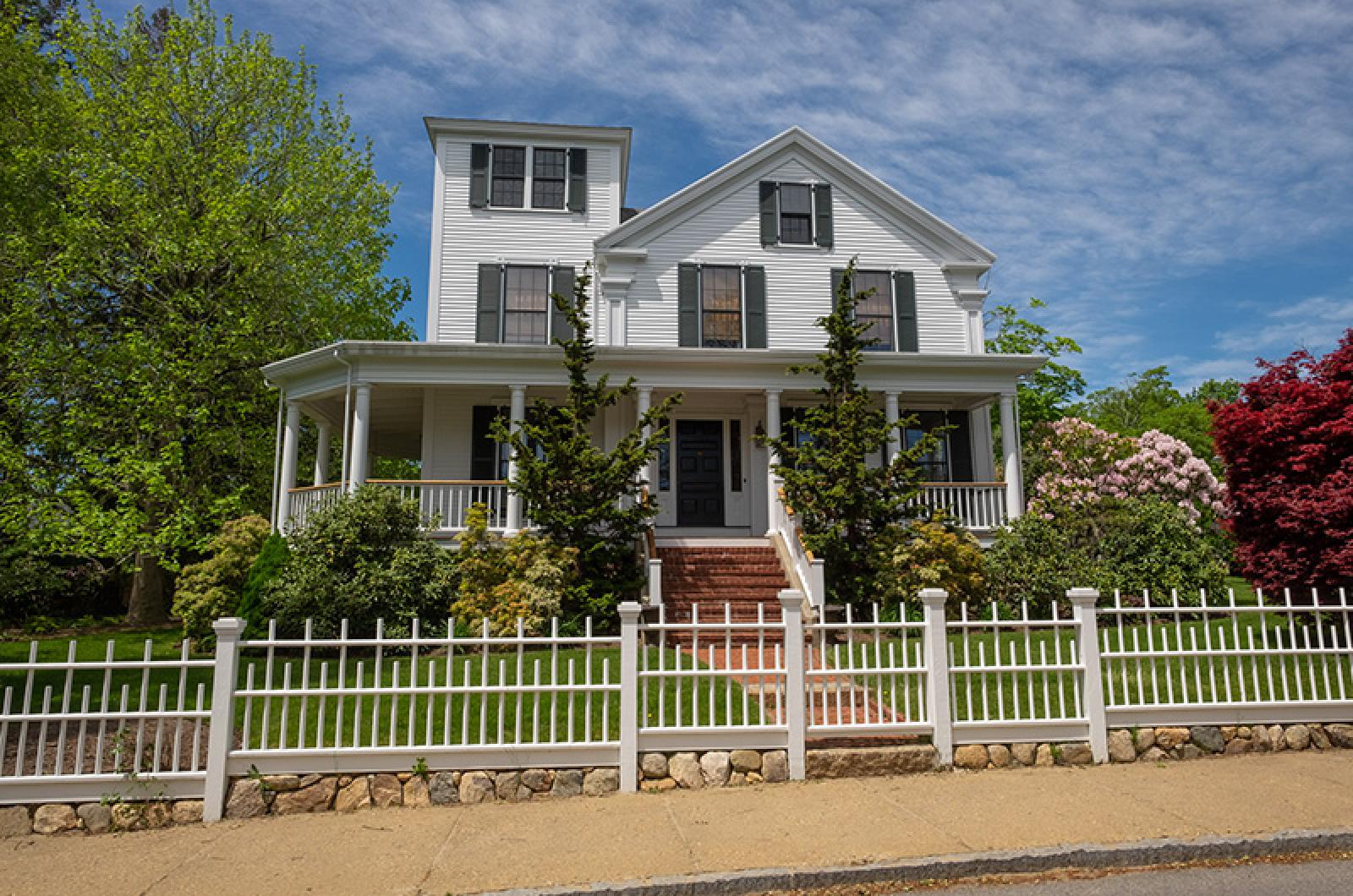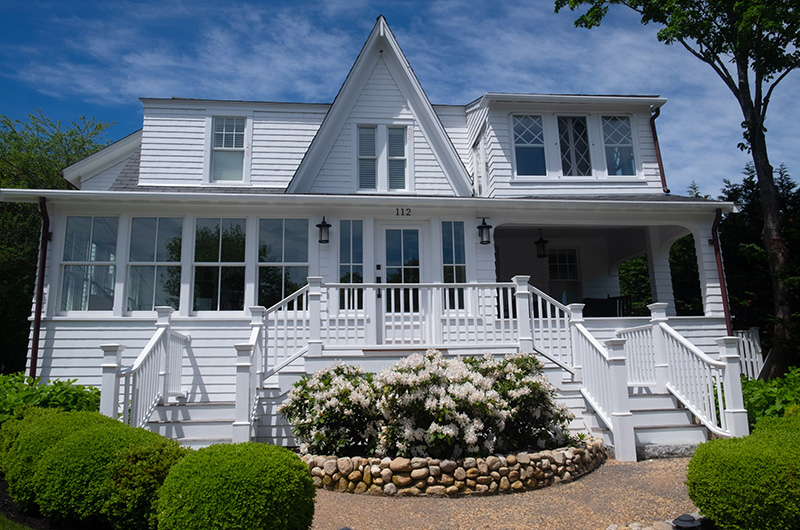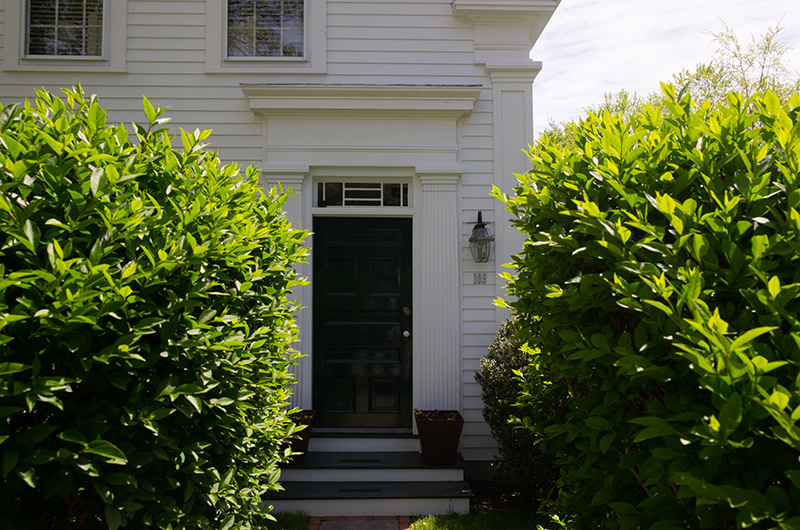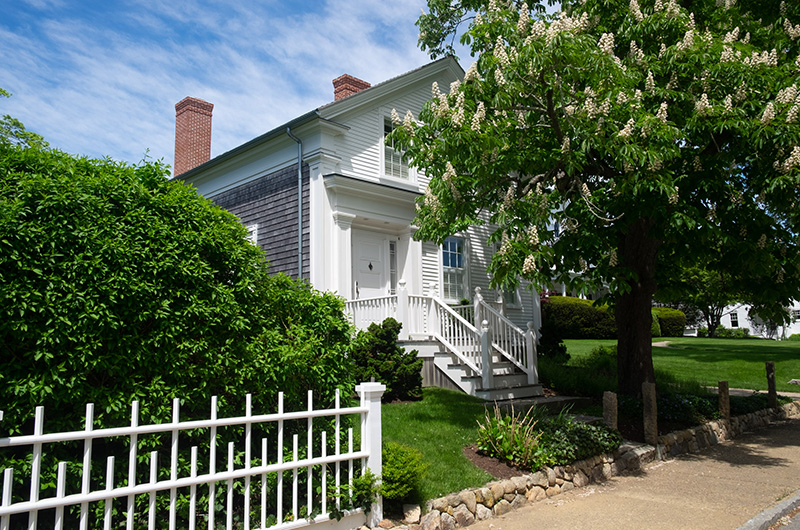Standing in front of a whaling-era captain’s house in the William street historic district, Harold Chapdelaine explained how he looks at old properties.
“The house tells a story. Part of the uniqueness of these properties is going from generation to generation, and the different improvements tell the story of that home,” the chairman of the Tisbury historical commission said.
Last month the teardown of the historic Mill House on the Vineyard Haven harbor sparked outcry from Island preservationists and others. The project has since been referred to the Martha’s Vineyard Commission and will now go through a review process with the MVC.
Mr. Chapdelaine said the teardown ultimately might have been allowed, but without a proper review process, there was no opportunity for important historic cataloging to be conducted.
“We weren’t given the opportunity to reflect on it,” he said. “That’s for me the most difficult thing.”
On a recent walk through the William street historic district, which was added to the National Register of Historic Places in 1983, he talked about what can be gained from preservation. The district was formed by town meeting vote in 1975 and includes some 60 properties.
Mr. Chapdelaine stopped in front of the Charles Downs house, built in 1836 at 98 William street.
“This is an example of a home we worked really, really closely with the owner and architect to expand and renovate but maintain the historic character,” he said. The house is a stately Greek revival with a three-story, flat-roofed tower. The grandeur is fitting for the whaler and entrepreneur Captain Downs, who among other ventures made a 135-day voyage from the Island around Cape Horn to California in the schooner Rialto to search for gold. Captain Downs returned to the Island to live out the rest of his life at the house in 1850, according to James H. K. Norton’s historical study, Walking in Vineyard Haven.
Like many of the historic properties in the district, the house is part of an inventory of Tisbury structures that predate a devastating fire that swept through the center of town in 1883 while many residents were away in Oak Bluffs celebrating Illumination Night.
Mr. Chapdelaine said at some point after the house belonged to Captain Downs, its tower was removed and was eventually forgotten. But as builders conducted recent interior renovations, they uncovered evidence of the tower.
“During the interior demolition, the framing of the original tower was exposed,” he said. “So they brought it back.”
He said tourists and Islanders alike walk through the historic district to learn about the history of the Island. He sees the commission’s oversight as an effort in the public interest.
“We only get one shot to preserve the homes. If we let them go, we lose a snapshot in time,” he said. “We compromise the very thing that attracts people here.”
He pointed out the window work on the Freeman Daggett house at 104 William street. The house was built in 1841 for $1,242, according to Mr. Norton’s Walking History. Mr. Daggett was a seaman who died while on a voyage in 1851. It is a comparatively modest house, but the windows retain authentic inset panels and corner blocks. The rippled glass window panes are original.
“You wouldn’t be able to go to a lumber yard today and buy this piece,” Mr. Chapdelaine said of the details.
He noted the moldings on top of the front corner caps that are flat, not curved. “It shows the tools at the time didn’t allow them to make a curve cut,” Mr. Chapdelaine explained.
The house has been extensively renovated with a sizable addition extending the back section. There is also a new one-car garage and a potting shed. Mr. Chapdelaine said the changes allow the historic house to adapt to the 21st century.
“It ends up telling a story. The original stairway is still in that house. It’s this gorgeous curve and original handrails,” he said. “And it’s art.”
Rounding the corner at Colonial Lane, he pointed out a house on Main street that he called an example of what can go wrong when replacing historic structures. The new house is a substantial Dutch colonial with a gambrel roof. Mr. Chapdelaine said the house replaced smaller buildings that had space between them that afforded views of the harbor. Now the views are blocked.
“When these properties were torn down my phone rang for three days,” he recalled.
He said the architecture of the new house is not representative of Vineyard Haven. The new house extends from one side of the property to the other. Large trees and a pool shed block views of the water beyond it.
“We don’t know the Vineyard Haven harbor is even there anymore,” Mr. Chapdelaine said. “To me there has to be some social conscience, some responsibility in development. It tells a story about our values.”
A builder by trade, Mr. Chapdelaine, along with the rest of the historical commission, collaborates with homeowners who are seeking to update historic houses. He said the goal is not to prevent change altogether, but to respect the historical throughline with thoughtful renovation.
In the William street historic district, some roofs on 19th century houses are covered in newly-mounted solar panels. The panels are required to be solid black so they almost blend in to the historically accurate shingling beneath them. Mr. Chapdelaine said the panels contain important information about this time.
“They do tell a story: In the early 21st century, America thought solar energy was a path to energy independence,” he said. “So what will they say about us in 100 years?”











Comments
Comment policy »